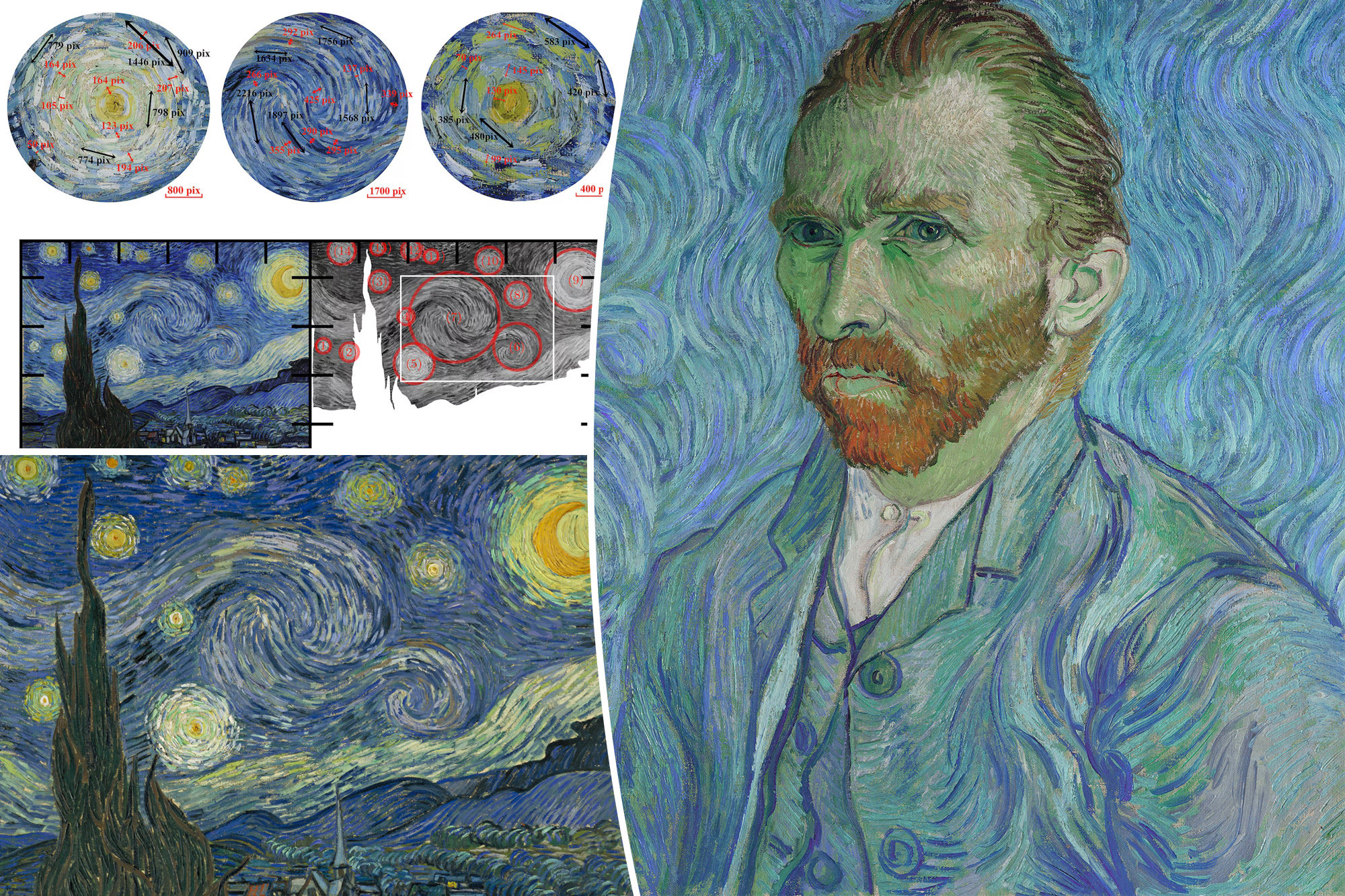
He really went the extra mile.
“Starry Night,” the 1889 artwork by Dutch painter Vincent van Gogh, is remarkably consistent with the astronomical principles of our sky, atmospheric scientists recently discovered. It also hints that the artist was way ahead of the scientific minds of the 19th century.
Scientists believe that van Gogh’s bold brushstrokes appear to be calculated to account for points of uneven airflow, known as turbulence, that would cause changes in the visuals of the night sky.
Even more miraculously, he had painted the living piece in daylight in a windowless studio, according to Artnet.
Now, researchers published in Physics of Fluids have identified what they describe as a “hidden turbulence” within van Gogh’s stellar style.
The artist seems to have compensated for principles in fluid dynamics that were not established until almost 100 years later – such as a scale for the movement of air energy designed by mathematician George Batchelor in 1959.
“The rate of ink strokes played a crucial role,” said author Yongxiang Huang.
“With a high-resolution digital imager, we were able to precisely measure the typical size of the brushes and compare these to the scales expected from turbulence theories.”
Beyond that, a 2019 study even suggested that it accounts for turbulence not only within the atmosphere, but also stars light-years away.
The current study authors examined different types of brushstrokes in similar circumstances as leaves blowing in the wind to classify the atmospheric conditions of the wind such as its shape and energy. Other factors related to the brightness within the different paint colors were also examined in relation to the energy of movement.
What they learned most through experimentation—including a look at the 14 swirling shapes of “Starry Night”—was how van Gogh had an uncanny connection to the movement of our natural earth and sky.
“It reveals a deep and intuitive understanding of natural phenomena,” Huang said.
“Van Gogh’s accurate representation of turbulence may have come from studying the movement of clouds and the atmosphere or an innate sense of how to capture the dynamism of the sky.”
The space work and intentional glows were found to be consistent with the actual motions of the atmosphere within the scale of its motion-driven energy—known scientifically as Kolmogorov’s 1940 law.
Specifically from an academic perspective, “Starry Night” stands out for the brightness that spreads throughout the painting along with the subtleties of the aforementioned turbulence from the atmosphere.
Now the team is looking at van Gogh’s masterpiece to rethink what we know about the idea of air currents and related “phenomena”.
“It seems time to propose a new definition of turbulence to embrace more situations,” Huang said.
#Van #Goghs #Starry #Night #holds #celestial #mystery #scientists #discovered
Image Source : nypost.com